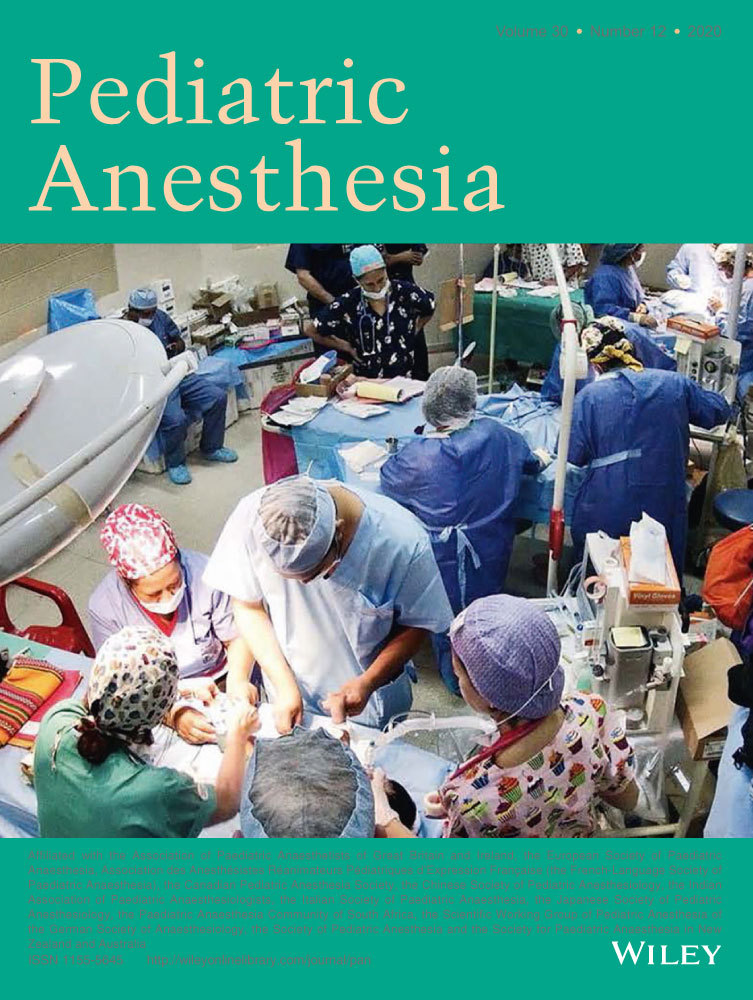Comparing oscillometric noninvasive and invasive intra-arterial blood pressure monitoring in term neonates under general anesthesia: A retrospective study
Abstract
Background
Oscillometric noninvasive blood pressure and/or invasive intra-arterial blood pressure are commonly used to measure the systolic, diastolic, and mean components of blood pressure. Agreement between the two methods has been reported in adults, children, and infants, but rarely in neonates, especially under general anesthesia.
Aims
This retrospective study compared the agreement of each measured blood pressure value (oscillometric noninvasive or invasive intra-arterial blood pressure monitoring) in term neonates under general anesthesia.
Methods
Data were collected from neonates born at ≥36 weeks of gestation whose body weight was ≥2500 g and who underwent abdominal or noncardiac thoracic surgery with both oscillometric noninvasive and invasive intra-arterial blood pressure measurements from January 2015 to March 2020. The primary outcome was the agreement of systolic, diastolic, and mean blood pressure values between the two methods using Bland-Altman analysis.
Results
Paired blood pressure measurements (n = 1193) from 67 cases were compared. In Bland-Altman analysis, bias (standard deviation), 95% limits of agreement, and percentage error were −9.3 (8.4), −26.1-7.6, and 26.9% for systolic; 1.6 (6.5), −11.3-14.6, and 38.7% for diastolic; and −1.3 (5.8), −13.0-10.3, and 26.9% for mean blood pressure, respectively. During low blood pressure (intra-arterial mean blood pressure ≤30 mm Hg), the biases (standard deviation) of systolic, diastolic, and mean blood pressure were −11.4 (5.7), −0.7 (3.7), and −5.1 (4.2), whereas during high blood pressure (intra-arterial mean blood pressure ≥60 mm Hg), the values were 0.1 (9.7), 5.6 (9.4), and 6.4 (7.4), respectively.
Conclusions
Based on the bias and percentage error, the mean blood pressure exhibited the most acceptable agreement between oscillometric noninvasive and invasive intra-arterial blood pressure monitoring in term neonates under general anesthesia. However, during hypertension or hypotension, there was a large discrepancy between the two methods.
CONFLICT OF INTEREST
The authors declare no conflict of interest.




